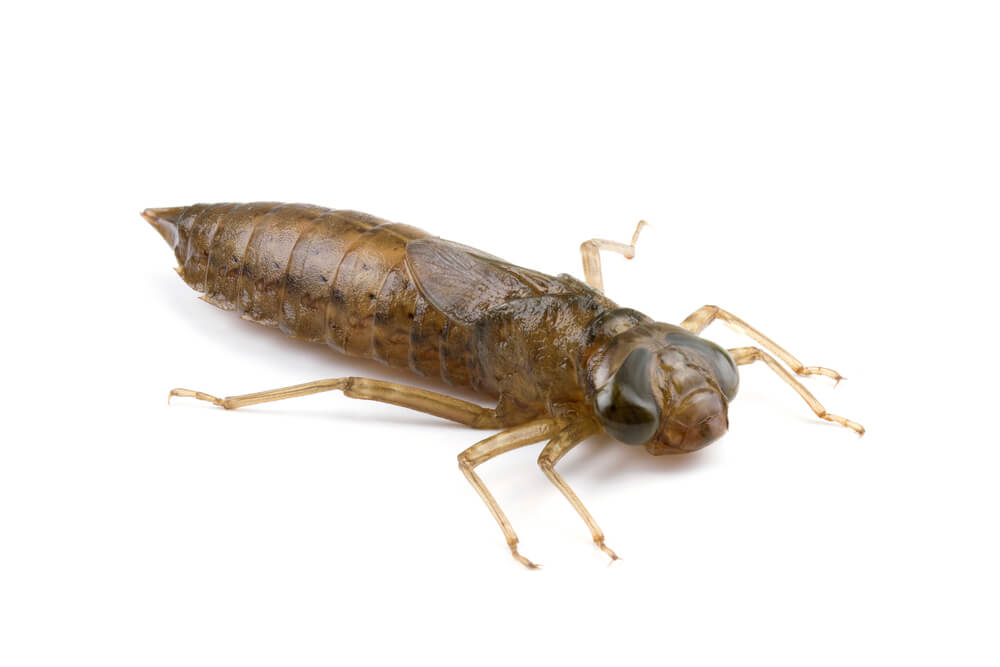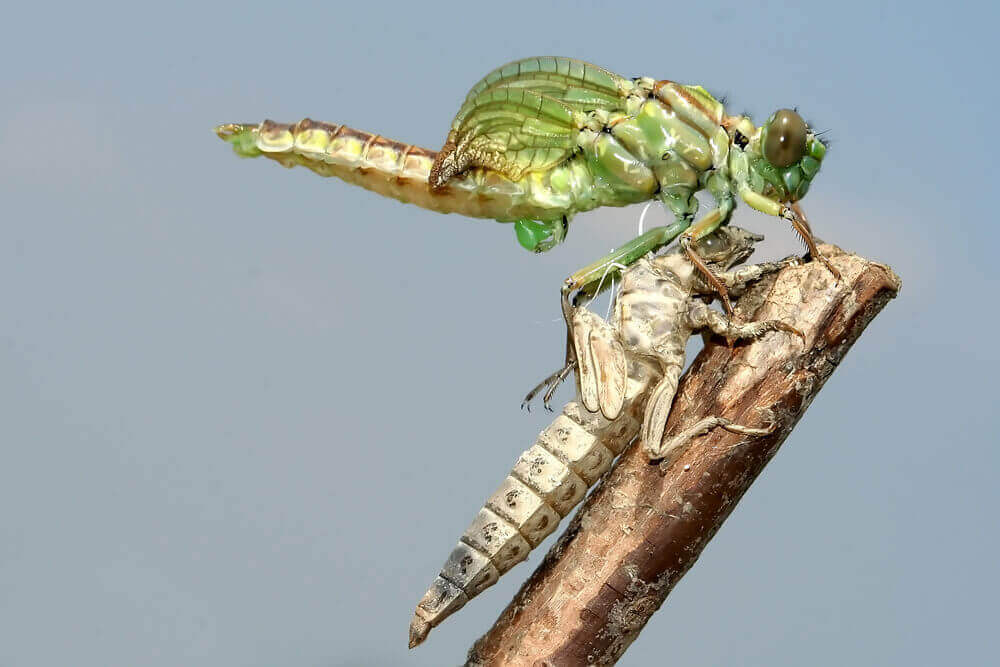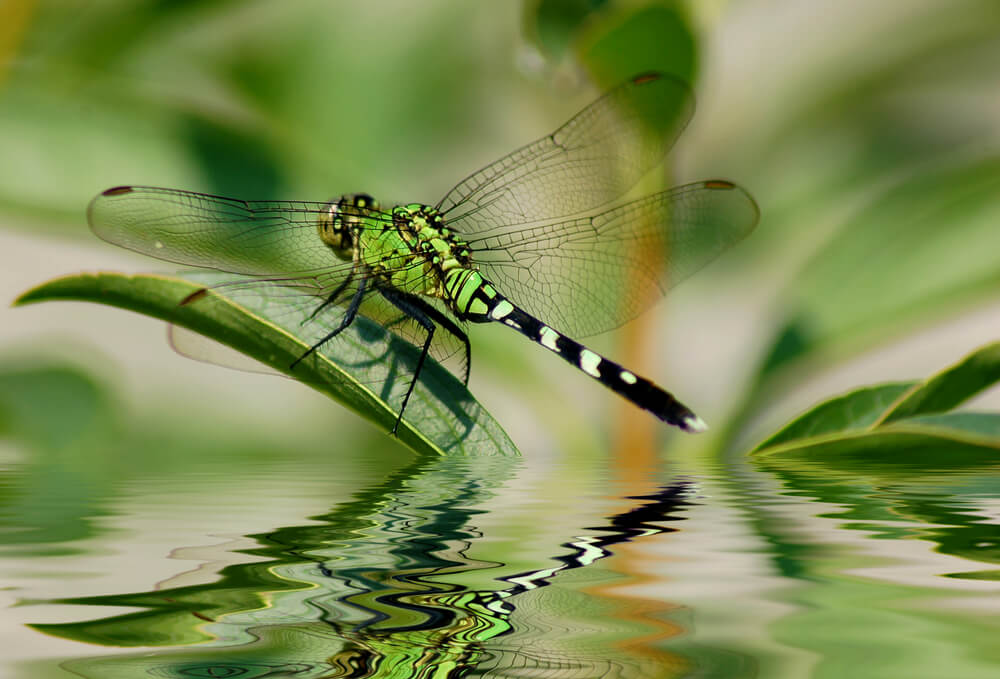Flying insects can be annoying. Mosquitoes can bite, wasps can sting, flies are dirty and can be irritating, but dragonflies are really quite special.
It’s true when they come into the house, they make a little noise as their wings brush against the windows or ceilings. But look at them closely, and they are quite beautiful.
Dragonflies are one of the best insects to have around. They eat other insects, including lots of mosquitoes, so they should be encouraged.
What is a Dragonfly?
Dragonflies and damselflies are part of the Odonata order of flying insects, which goes back 325 million years. Worldwide there are close to 7000 species of odonates.
There are 316 species of dragonflies and 131 species of damselflies found in the US.
Dragonflies need water to prosper, and they have 3 stages in their life – egg, nymph or larva, and adult. The length of each stage depends on the species and the temperature. Normally, the hotter the climate, the more quickly the dragonfly will develop.
The female dragonfly lays her eggs in or near the surface of still water. Depending on the species, she can lay anything from a few hundred to thousands of eggs during her lifespan. The eggs can hatch in anything from a few days to several weeks in tropical areas. Or in more temperate regions, the eggs may hatch the following spring.
Dragonflies Eat Mosquitoes In Larval Stage and As Adults
The dragonfly eggs hatch, producing larvae or nymphs. The nymphs are voracious predators and feed on tadpoles, mosquito larvae, small fish, other insect larvae, and even each other.
Nymphs have different ways of hunting. Some bury themselves in the sand or mud at the bottom of a pond and grab any larvae that pass. Others climb on aquatic vegetation to stalk their prey.
Depending on the species, nymphs molt their skin between 8 and 17 times. And they can stay as nymphs for up to 4 years.


Unlike many other winged insects, the dragonfly doesn’t go through a pupal stage before emerging as an adult. The nymph crawls out of the water and hangs on a bank or the stem of an aquatic plant. They will start to breathe air. Slowly the adult dragonfly will emerge. The wings and abdomen are expanded and start to harden. The process will take a few hours.
The first flight is often only a few meters, and at this stage, the dragonfly is very vulnerable, especially to birds. The young adults may fly to fields with long grass or woodlands to remain safer for about a week.
During the feeding away from the water, they will gain their adult coloration and become sexually mature. When ready, the adult will return to the water and mate with a female.
An adult dragonfly’s average lifespan is often no more than 1 or 2 weeks, but some of the larger species can live for up to 4 months.
Feeding Habits of Adult Dragonflies
Dragonflies eat while flying, and it’s estimated they catch 95% of the prey they go after. With excellent vision, a dragonfly is also one of the strongest fliers in the insect world. They might not be particularly fast (up to 30mph depending on species), but they are very agile. They can move in any direction, upward, backward, forwards, sideways, or even hover.
Adult dragonflies will eat any insect they catch. This will usually be mosquitoes and midges but can be ants, moths, flies, bees, or other dragonflies. They can eat up to their own body weight of insects every day. Each dragonfly can consume about 100 mosquitoes every day.
Attract Dragonflies To Your Garden
Now you know a little about dragonflies, and that they eat mosquitoes, both as nymphs and adults, you may want to attract them to your garden.
Dragonflies develop in water, so you will need a pond. The water must contain sufficient oxygen and be free of any toxic substances.
The best ponds will get 5 or 6 hours of sun, be sheltered from the wind, have shallow water around the edges, and a depth of at least 2 feet in the center.
The nymphs prefer ponds with lots of plant growth where they can hide from their predators and ambush their prey. Many require plants that grow up out of the water to enable the larva in its final stage to climb before emerging as an adult.
The adult dragonflies will appreciate some trees and bushes a few yards from their breeding places. Not too near, or the pond will receive the dead leaves. The newly emerged dragonflies will use these as shelter, and they also provide an area for hunting and resting.
For more details on creating a habitat for dragonflies, you can consult these two guides: Dig a Pond for Dragonflies and Guidelines for Creating and Managing Habitat for Dragonflies.
Won’t a Pond Attract Mosquitoes?
Yes, a water feature will attract mosquitoes!
But the solution is quite easy. Add a mosquito dunk. The dunks contain a bacteria, Bacillus thuringiensis israelensis (Bti) that kills mosquito larva. The Bti won’t harm other organisms like dragonflies or nymphs, fish, birds, or other wildlife.
The dunks will slowly dissolve over a period of about 30 days. When one has completely dissolved, add another, and your pond will be free of mosquito larvae. Dunks are considered to be environment friendly.
Other ways of keeping a pond free of mosquito larvae are to add fish or to keep the water moving by adding a fountain or waterfall. But, if you add fish, they will eat the dragonfly larvae, and some dragonflies don’t like moving water.
As you can see, it’s tough to create a well-balanced environment to encourage dragonflies without boosting the mosquito population.
Are Dragonflies Effective in Controlling Mosquitoes?
Dragonflies and nymphs are ferocious predators, and they will eat adult mosquitoes and larvae. However, there are no hard facts on the number of mosquitoes they can eat.
It’s generally thought they can eat 100 or more mosquitoes per day which is quite impressive. This is why they have the nickname “mosquito hawk”
If you build a pond, will you see a decrease in mosquitoes? They certainly help control skeeters, but it’s hard to say if you will notice a real difference. At the same time, you need to be sure you’re not letting mosquitoes breed in your pond. Watching the additional wildlife a pond can bring is a joy, even if you don’t notice a big difference in the mosquito population.
It’s a little like encouraging bird-eating mosquitoes, bats, or other mosquito predators they will eat some mosquitoes, but they won’t eliminate them.
Encouraging dragonflies is one form of mosquito control and not the only one you should consider. First and foremost, make sure you have eliminated, covered, or treated with a larvicide all standing water where mosquitoes can breed. Think about installing a mosquito trap. Use mosquito repellent, and if necessary, wear long-sleeved shirts, trousers, and socks.

